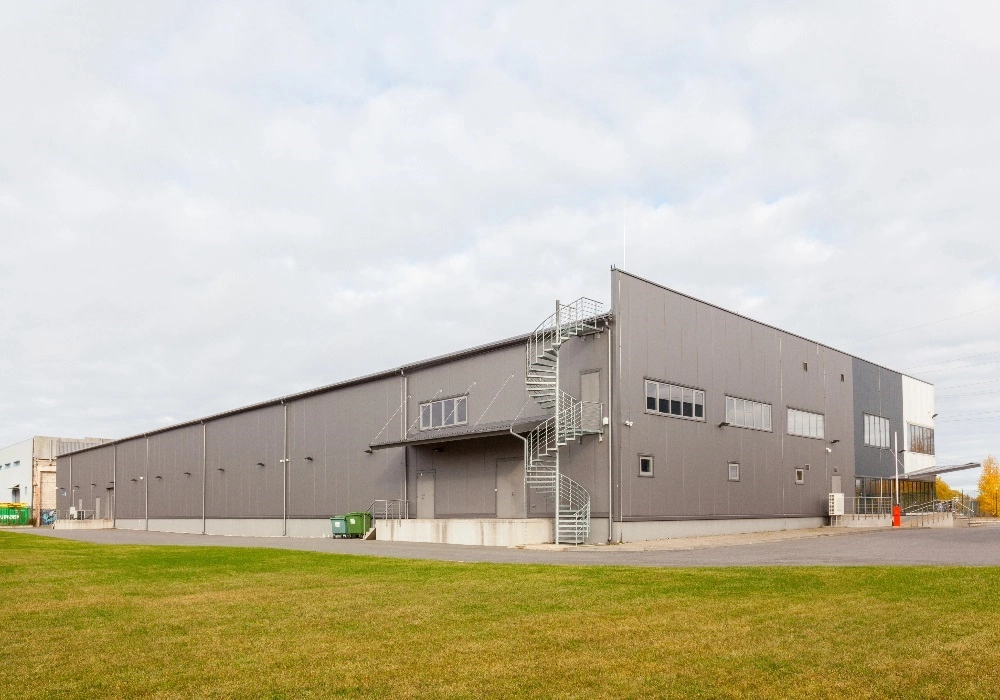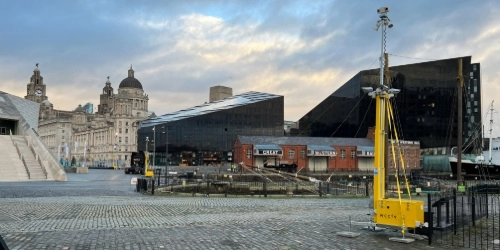Data Centres face a variety of crimes from ransomware and firewall attacks to physical theft, arson and trespassing. We’ll take a look at why CCTV cameras play a vital role in the security of Data Centres.
CCTV Cameras are a necessity when it comes to securing your Data Centre, both inside the building and externally.Data Centres are an ideal target for criminals who want to steal data, cables, metal and even physical servers. They can sell these on to make a quick profit and even hold users' data to demand a huge payout before handing it back.
There are lots of different ways to secure a Data Centre, and one of the best ways includes CCTV Cameras
How do You Secure a Data Centre with CCTV Cameras?
There are multiple ways and uses for CCTV Cameras to be used both inside and outside a Data Centre.
Each site will be different and have unique requirements, so it’s always best to conduct separate internal and external risk assessments of the site to determine where your biggest security risks are.
What Types of CCTV Cameras are used at Data Centres?
With an ever-evolving world of technology, there will always be something new on the horizon, but these new technologies are usually integrated or work alongside existing tech.
Let's take a look at some of the most frequently used CCTV cameras for Data Centre Security.
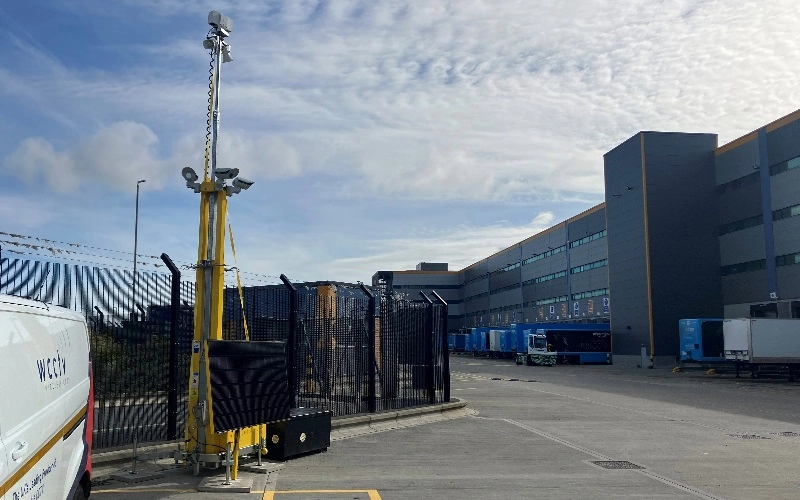
Infrared PTZ Camera
An Infrared PTZ Mini Dome Camera is one of the most used in any industry, not just securing Data Centres. With its compact size and Pan Tilt Zoom capabilities, it's a perfect choice for companies who are serious about security.
Our Mini Dome Camera can be relocated with ease and has three additional input channels that allow you to customise your camera setup by adding accessories and ancillary equipment, such as:
Depending on your requirements, the Mini Dome Cameras can be placed at main entrances and exits with ANPR to track who is entering and exiting the site.
It can also be paired with a voice-down address system to watch specific blind spots or where lighting is poor to detect any trespassers or intruders, which then plays a live or recorded message to deter them.
ANPR Cameras
ANPR stands for Automatic Number Plate Recognition, a specific technology that captures vehicle number plates and relays this information into a text format that is easy to read.
It’s particularly helpful at Data Centres and similar sites where there is a designated entrance and exit so you can keep track of any vehicles that enter your site,
For instance, if you have scheduled deliveries, you may only want vehicles that have been pre-approved to enter the site. This is a great way to ensure that this happens.
Thermal Cameras and CCTV Towers
Thermal Cameras are used to further detect trespassers and unusual activity, usually through a remote monitoring station.
They are usually attached to a Redeployable Smart CCTV Tower, so you get the benefits of both the PTZ Mini Dome and thermal imaging.
What's the Best Camera to Secure a Data Centre Perimeter?
In our opinion, the 4G Infrared Mini Dome Camera is perfect for securing the perimeter of a Data Centre.
It’s an all-in-one surveillance system that combines infrared technology, Pan Tilt Zoom capabilities and onboard video storage.
It is lightweight and has wireless connectivity, meaning it can be located practically anywhere and doesn’t need to be connected to your local WiFi.
Alternatively, the Solar Fuel Cell Tower is ideal for locations without a fixed power supply. It comes with an audio speaker and alarm system which plays a warning when trespassers have been detected.
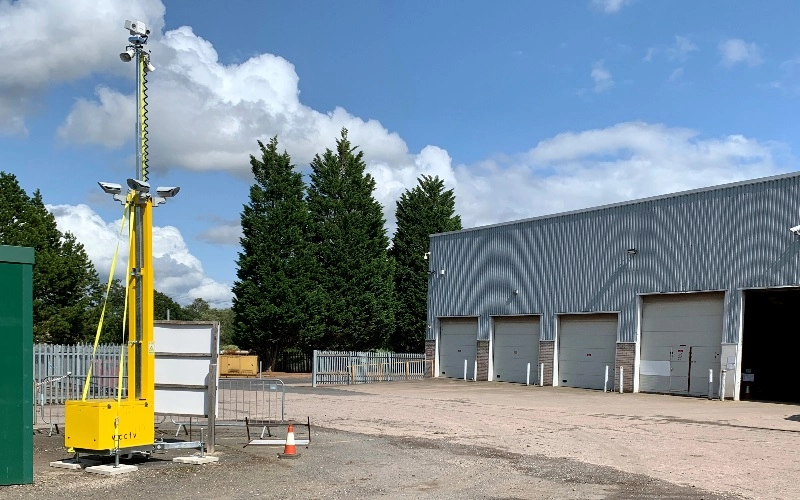
Remote CCTV Monitoring for Data Centre Security
Remote CCTV monitoring is when a professional team actively monitor one or more CCTV cameras in a centralised control centre where they deter criminals through different methods such as:
-
Sounding an alarm
-
Voice-down challenging, physically talking to the trespassers
-
Contacting on-site security guards or dispatching local police
These companies usually have a set of guidelines or rules to follow which are agreed with the person in charge of security for the data centre.
What is the process of Remote Monitoring for Data Centres?
There are generally six main steps that companies will use when an intruder has been detected, although these can be expanded depending on your security protocol.
Intruder Spotted
The first stage in the remote monitoring process begins when an intruder is detected entering or breaking the invisible perimeter.
The camera, which is usually an Infrared PTZ camera, and the detectors work together to identify the perimeter has been breached and the system will immediately notify the monitoring station.
Monitoring Station Track and Verify
Once the monitoring station, also known as the Alarm Receiving Center (or ARC), has received the intruder notification, they log in to the specific camera and verify if this is an intruder or a false alarm.
False alarms are classed as animals like cats or foxes that trigger a notification.
Once they detect the presence of an intruder, they will very quickly track and verify this.
If you have a recommended Infrared PTZ camera then the operator will be able to use the full capabilities and get a closer inspection, follow the intruders movements and assess the situation accurately.
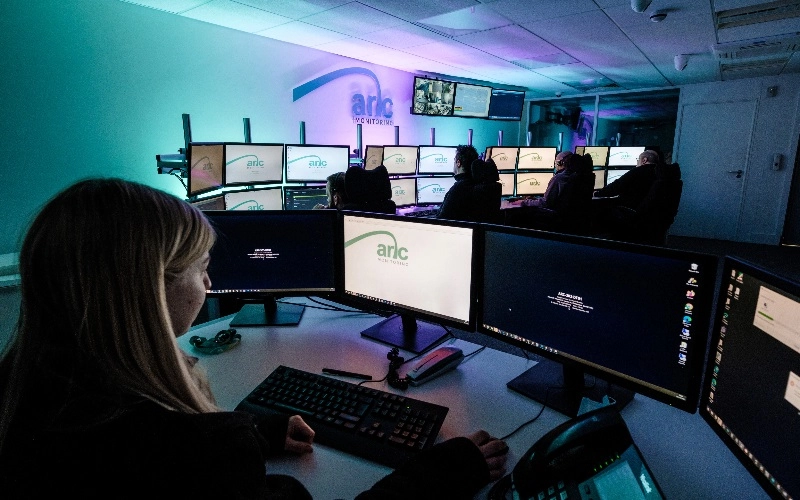
Record Evidential Footage
Whilst the operator is verifying and tracking the intruder, the camera is capturing important evidential footage, which can be invaluable for police investigations, insurance claims or any future legal proceedings once the intruders are captured and arrested. It will provide a clear and indisputable record of events.
Live Audio Warning
Once an intruder is detected and verified by the operator at the control center, they will issue a live audio warning via a speaker.
The speaker is usually in close proximity to the camera, either on a building or as part of a portable CCTV Surveillance Tower. The audio warning can be a live or pre-recorded message which warns them to leave the premises immediately.
The audio warning is a powerful deterrent and will often be enough to resolve the situation without any further intervention.
Police or Security Dispatched to Site
As we mentioned above, the audio warning is usually enough but if the intruders ignore this then the ARC will contact the local police or security services.
When police or security are attending site they will prioritise you as a requirement as they understand that a highly accredited gold monitoring team have verified the situation in real time
Evidence Provided
The last step is to provide the footage to yourself, and police if required, as evidence. If criminals are caught, this footage is perfect for prosecutions.
